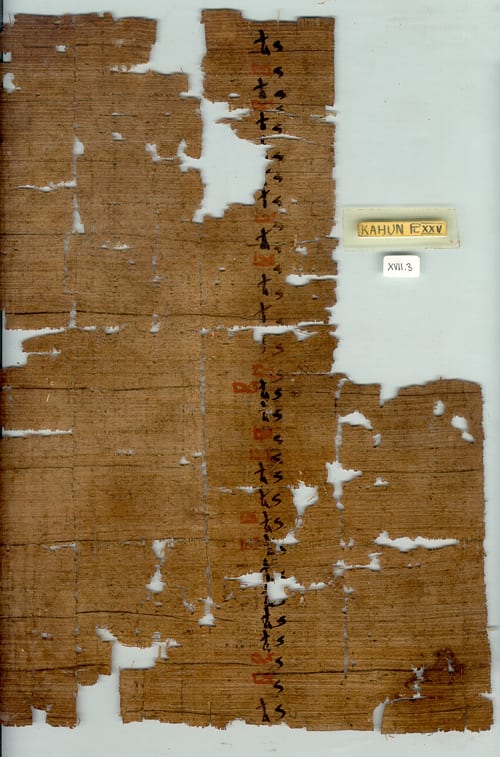An Introduction to the Papyrus for the People Project
By tcrnlmb, on 5 July 2017
Just a little over six months ago, the Papyrus for the People Project began after being awarded Designation Development Funding by Arts Council England. During this time, we have done a lot of work behind the scenes to grow our project into something amazing. As we’ve just reached this milestone, I thought it would be a great idea to share more about the project, what we’ve been doing and what we plan to do onwards.
The Project
The project aims to improve and promote the understanding of the Petrie Museum’s written material – namely the papyrus and ostraca collections – to a wider and non-specialised audience. To facilitate these aims, we will make these objects fully accessible via an online database that will have new, high resolution photography of the papyri and user-friendly descriptions, as well as through new permanent storage and conservation of the glass frames holding the papyrus. This will allow researchers to physically access the collection safely and with ease.
The value of this material cannot be over-exaggerated; as interpretations of these texts are being made by specialists in Hieratic, Demotic, Greek, Coptic and Arabic (some of the varying languages of the Ancient Egyptian world), we are already shedding light upon issues such as identity, gender, inequality and sexuality, which are still relevant today.
It is not too farfetched to say that our collection has a papyrus for every occasion; with documents ranging from tax records and accounts, to personal letters and notes – with of course, everything in-between. So far, some of the texts which have stood out to me include: a complaint by a farmer over the confiscation of his donkey and its load by (what he suggests is) a corrupt policeman (UC31907), and a list of days, where somebody has marked next to them whether they were good, bad or both (UC32192). Going through these papyri, it can be very surprising how little human issues and behaviour have changed in 5000 years!
What’s Going On
We are currently making great headway into the Papyrus for the People Project; already improving access to the written texts. With the papyrus, we have just finished a conservation survey and have measured the objects in preparation for their new home. This information was then inputted into a spreadsheet, which allowed us to collate and rank the data; prioritising the objects which we saw as needing the most difficult or time-consuming conservation treatments.
We have also raised the current standard of documentation so that the online records already reflect the collection more accurately. Furthermore, the sample interpretations we have just received from the project language specialists, truly bring the stories hidden in the papyri to life, and explain details that may otherwise have been left as implicit knowledge to only those who work in the field.
The Future
We are very proud to be conducting this project, as it is one of only a few initiatives that have sought to promote and interpret ancient written texts to the public. Moreover, since many of our papyri were excavated by Petrie, the majority from the site of Lahun, we can also show contemporaneous and local objects related to the text, to really bring the people and society that wrote them to life.
Even at such an early stage in the project, we find that this material is ideal in exploring the ways in which humans can express themselves through literacy. Thus, there will be many programmes, exhibitions and engagements that will result from this project and the topics that arise from it. So, be on the lookout for activities and events that are coming soon!
The Designation Scheme recognises, celebrates and champions significant collections of national and international importance held outside national museums. Awards of Designated status are made by an independent expert panel, based on the collection’s quality and significance.
The 2016-18 round of the Designation Development Fund is investing £1,330,849 to support projects that ensure the long-term sustainability of Designated museum collections.
The Designation Development Fund recognises the importance of excellent collections and provides funding for projects that ensure their long-term sustainability, maximise their public value and encourage the sharing of best practice across the sector. In this round, we will focus on opportunities around research and understanding of Designated collections.
***Arts Council England champions, develops and invests in artistic and cultural experiences that enrich people’s lives. We support a range of activities across the arts, museums and libraries – from theatre to digital art, reading to dance, music to literature, and crafts to collections. Great art and culture inspires us, brings us together and teaches us about ourselves and the world around us. In short, it makes life better. Between 2015 and 2018, we plan to invest £1.1 billion of public money from government and an estimated £700 million from the National Lottery to help create these experiences for as many people as possible across the country. http://www.artscouncil.org.uk/
Louise Bascombe is the Curatorial Assistant working on the Papyrus for the People Project at the Petrie Museum of Egyptian Archaeology.
One Response to “An Introduction to the Papyrus for the People Project”
- 1
 Close
Close




[…] the ongoing programme of conservation. Louise Bascombe and Anna Garnett had presented their Papyrus for the People project last year and with the project coming to an end, it was inspiring to hear all the exciting ways […]